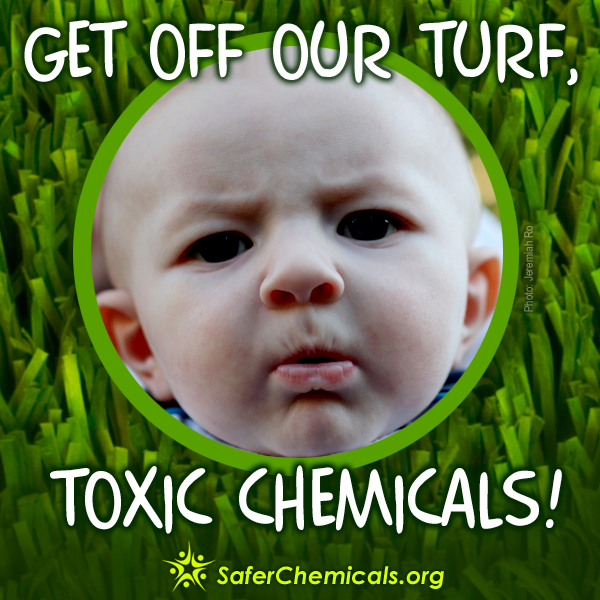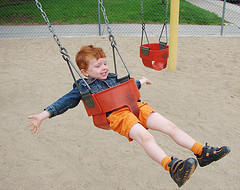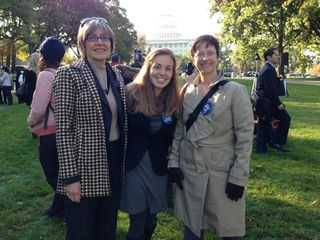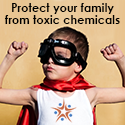 Over the last two decades, I’ve worked as an early childhood educator and as a volunteer advocating for policies and practices that support the well-being of all children.
Over the last two decades, I’ve worked as an early childhood educator and as a volunteer advocating for policies and practices that support the well-being of all children.
To my mind, children’s well-being is inextricably linked to public health and environmental issues so I’ve accumulated a bit of information and have developed a tendency to ponder the repercussions of various products and practices.
In recent years, my interest in gardening and nature drew me to a few very informative presentations about the dangers of synthetic lawn chemicals and pesticides developed and marketed after WWII and the alternative approach of organic lawn care.
As I learned more about organic turf care, I accidentally learned more about artificial (synthetic) turf and its sudden ubiquity. While I learned about the exorbitant cost of artificial turf and its many negative health and environmental implications from numerous public health and environmental experts, I also learned that others have the false impression that not only are there no negatives to artificial turf, but that there are no good alternatives.
I wondered to myself, how did this happen? I have some ideas.
Companies hire firm to defend toxic turfs
I learned that Gradient Corporation is defending the safety of artificial turf. A little research revealed that Gradient Corporation also defended arsenic in wood, the smokeless cigarette and BPA in plastic.
Apparently, companies hire Gradient to defend their products and protect them from future liability.
Even without pesticides, synthetic fertilizers alone will destroy the microbial life of the soil, cause quick but shallow root growth, and then lead to soil compaction and a vicious cycle of drainage and pest problems. And of course, many of these fields are under constant and heavy use, which leads to further compaction. Consequently, athletic directors found themselves with playing fields in very poor condition and in need of total renovation. Synthetic turf likely seemed the only alternative.
One community adopted it and with reassurance about its efficacy from Gradient Corporation and the industry itself, others followed.
Safer options exist
However, thanks to many developments in organic lawn care in recent years, there is an alternative way to effectively renovate and maintain a beautiful, real grass playing field safely and organically at one-third to one-half the cost of artificial turf. Many communities have done this already.
In my opinon, it is irresponsible for school and community leaders to consider only the options of the status quo, a chemically-based lawn care program or synthetic turf. They should consider the pros and cons for each with the overarching goal of “doing no harm” to the current or future generations whether it relates to health, landfill space, implications for the watershed, and more.
Real grass vs. a synthetic turf renovation

Synthetic turf requires additional infill, irrigation due to high temperatures, application of harmful disinfectants, sprays to reduce static cling and odors, drainage repair and maintenance, removing organic matter accumulation, repairs of seams.
Organically maintained grass will require natural fertilization to support the microbial life in the soil, aeration, overseeding, mowing and depending upon the weather, watering. With high quality seeds and care, maintenance costs usually decrease over time. It is a natural system and requires no cleaning; the microbial life of the soil can help to break down body fluid spills, animal feces, etc.
Before 2010, many synthetic turf companies used lead paint to paint the plastic grass blades green (they took the lead out when faced with a lawsuit).
Water use is an issue for both types of fields. Synthetic turf requires cleaning with water mixed with disinfectants. The industry now also sells water cannons to use on hot days (which works to cool the field for about 20 minutes). With the right seed and weather, one may be able to decrease water usage for real grass. Water conservation systems such as gray water and rain reclamation systems could be incorporated (perhaps more easily with real grass than artificial turf).
Turf Doesn’t Just Harm Children
Public health and environmental experts are concerned that athletes are inhaling, ingesting or absorbing the over 30 toxins in crumb rubber infill used in many fields and tracking them into their homes (see my article in February Observer for details).
Children are more vulnerable to toxic chemicals and are unable to process them due to their rapidly developing bodies and organ systems, but adults are still vulnerable. The negative health effects might not show up for years, but public health pediatricians now recognize that even low exposures to toxic chemicals can have dire long-term consequences for children and their offspring.
Toxic turfs cost more than grass fields
Artificial turf fields cost between $500,000-$1,000,000. My school district has a quote for $750,000 for one field (without maintenance and disposal costs, this amounts to $75,000/year). Oddly, many school and community leaders have balked at annual maintenance costs for real grass yet are willing to spend far more for disposable, synthetic turf. A premium organic renovation with real grass would cost approximately $300,000.
Synthetic turf fields need to be replaced and discarded about every 10 years. Disposal costs can be considerable, especially for those using crumb rubber infill since it is made of hazardous waste (not including the hidden costs of the space all of these will occupy in landfills nationwide). One report cites a disposal cost of $130,000.
Rundown on the Turf
- Synthetic turf fields are made of petroleum. Even without infill, the chemicals used to make the fields will break down to some degree under heavy use and end up in our watershed or air.
- Synthetic turf can reach dangerous temperatures on hot days and should not be used in these conditions.
- Synthetic turf has to be replaced, making is a very costly option.
Because my world view leads me to believe that when it comes to children, the environment and public health, it is safer to err on the side of caution and to reduce unnecessary exposure to toxins, I believe that a beautifully, thoroughly renovated organic turf field is a better option for my community.
As it turns out, it’s better for our fiscal health as well.
Join our email list for tips and action alerts. Together, we’ll move the marketplace towards safer chemicals.





